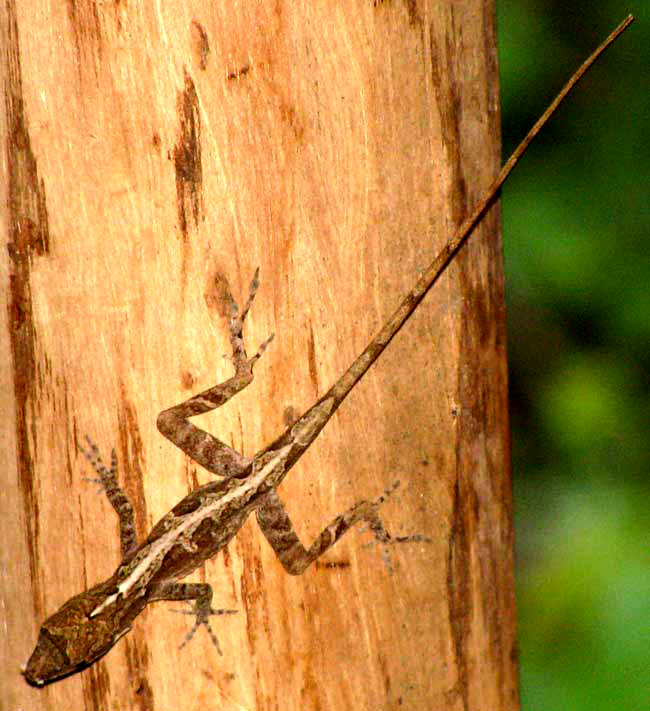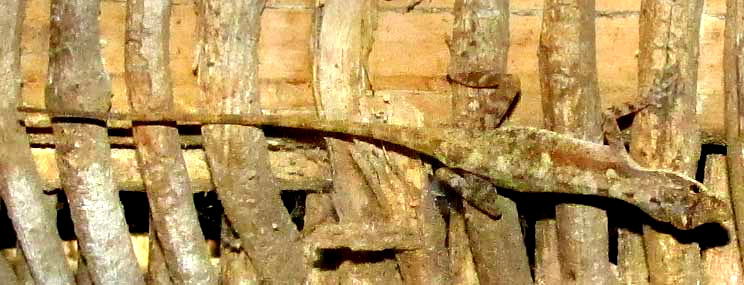Excerpts from Jim Conrad's
Naturalist Newsletter

from the May 2, 2010 Newsletter issued from Hacienda Chichen Resort beside Chichén Itzá Ruins, central Yucatán, MÉXICO; limestone bedrock, elevation ~39m (~128ft), ~N18.52°, ~W95.15°
A FEMALE BROWN ANOLE
The new Maya hut already was occupied by the time I moved into it, for it'd sat finished for a week or so before I got there, and lots of roaming critters know a good thing when they see it. On my first night in the hut a Common House Gecko occasionally erupted with his Krrrk krrrk krrrk! Also, during my first breakfast there a brownish, seven-inch-long (18 cm) lizardy something came jumping from wall pole to wall pole inside the hut.
This week one morning as I campfired my breakfast into existence the brownish, lizardy entity came working along the wall again, preying on invertebrates too small for me to see. I happened to have the camera handy so you can see who it was, illuminated by the camera's flash and with outside greenery showing through the crack in the wall at the right, in the above picture..
Once again nothing like this was pictured in Campbell's book, so, having just seen how handily James in Washington State identifies Yucatán's reptiles, I shipped the picture off to him and the very next day this verdict came back: female Brown Anole, ANOLIS SAGREI MAYENSIS. Campbell's book does picture a very dissimilar-looking male of this species, but Campbell calls it the Mayan Coastal Anole, Norops sagrei, which I assume is an older name. Once again it takes "reading the fine print" in Campbell's book before learning that the female has blotchy sides and a "pale tan or yellowish dorsal stripe" running down the back.
So this is a fine observation, especially because Campbell regards the species as not commonly found far from the coast, though he makes special mention of a population here at Chichén Itzá. I like to imagine that long ago someone, maybe a Maya citizen on pilgrimage to Chichén Itzá, brought from the coast a pet Brown Anole and let it go so that today we have this isolated population. But that's fantasizing. Natural processes could just as easily explain it. The species is native from Mexico's moist lowlands south to Costa Rica, as well as Cuba and Jamaica.
from the June 26, 2016 Newsletter issued from Hacienda Chichen Resort beside Chichén Itzá Ruins, central Yucatán MÉXICO
MALE BROWN ANOLE ON THE HUT DOOR
Back in 2010 we first looked at a Brown Anole {see above}. Nowadays, six years latter, about once a day, a Brown Anole races across my desk and disappears into the adjacent bookcase, but this one's markings are substantially different than the earlier one's. The 2010 one was a female, but the current one is a male. The female had displayed a conspicuous pale line running atop the spine, but the male lacks that line. Below, you can see this year's critter on the woven-vine door:
